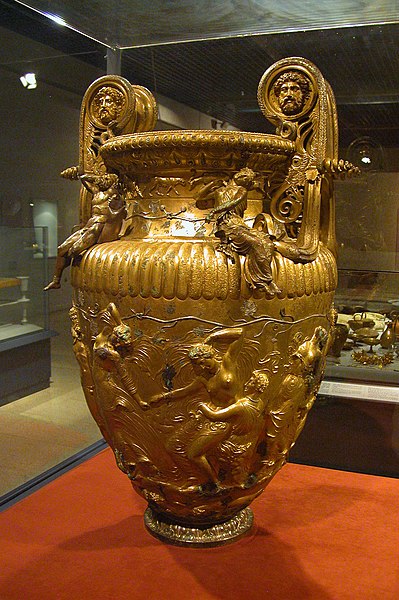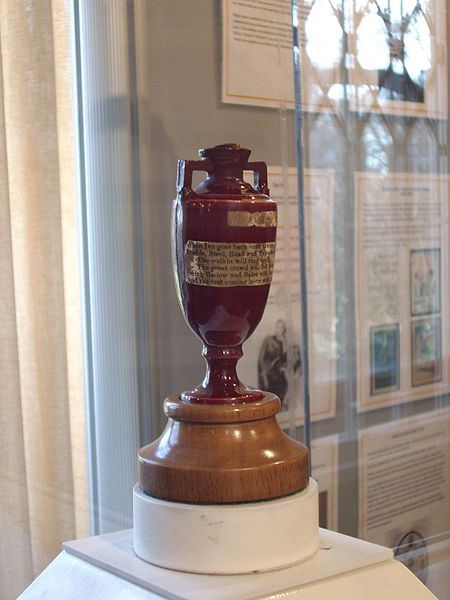An urn is a vase, often with a cover, with a typically narrowed neck above a rounded body and a footed pedestal. Describing a vessel as an "urn", as opposed to a vase or other terms, generally reflects its use rather than any particular shape or origin. The term is especially often used for funerary urns, vessels used in burials, either to hold the cremated ashes or as grave goods, but is used in many other contexts.
Ancient Roman urn made of alabaster
Ancient Greek cremation urn ca. 850 B.C.
The Derveni Krater, one of very few large Ancient Greek bronze vessels to survive
The Ashes urn.
A vase is an open container. It can be made from a number of materials, such as ceramics, glass, non-rusting metals, such as aluminium, brass, bronze, or stainless steel. Even wood has been used to make vases, either by using tree species that naturally resist rot, such as teak, or by applying a protective coating to conventional wood or plastic. Vases are often decorated, and they are often used to hold cut flowers. Vases come in different sizes to support whatever flower is being held or kept in place.
Neoclassical vase; circa 1790; jasper; height: 25.4 cm, width: 18.7 cm; Victoria and Albert Museum (London)
The David Vases; 1351 (the Yuan Dynasty); porcelain, cobalt blue decor under glaze; height: 63.8 cm; British Museum (London)
Detail of a red-figure lekanis; 365–350 BC; terracotta; Metropolitan Museum of Art (New York City)
Red-figure mixing vessel; 330-320 BC; terracotta; from Apulia (south Italy); Getty Villa (Los Angeles, USA)








